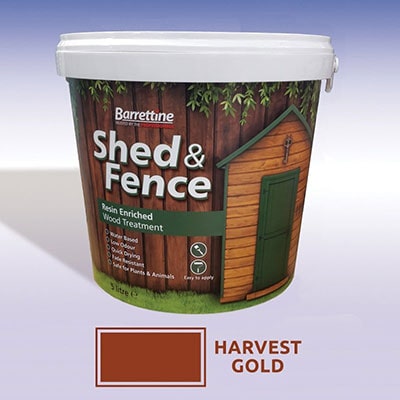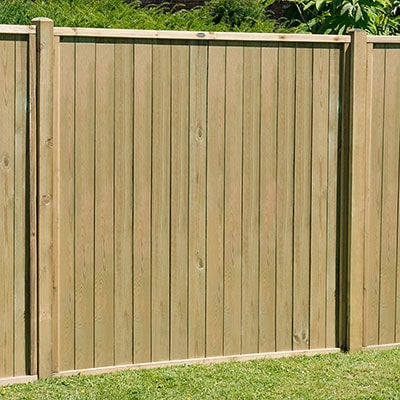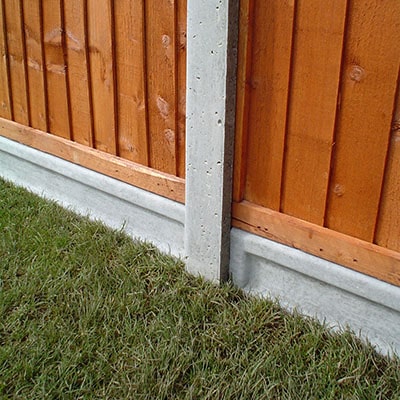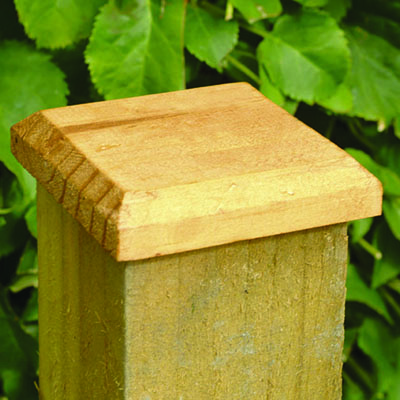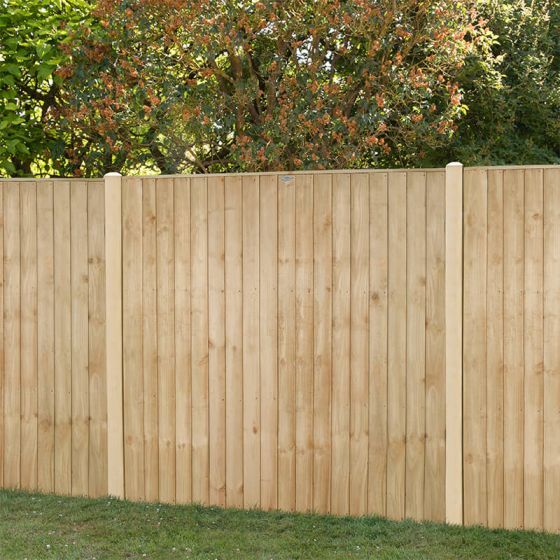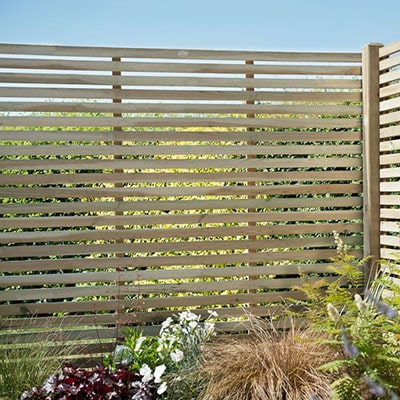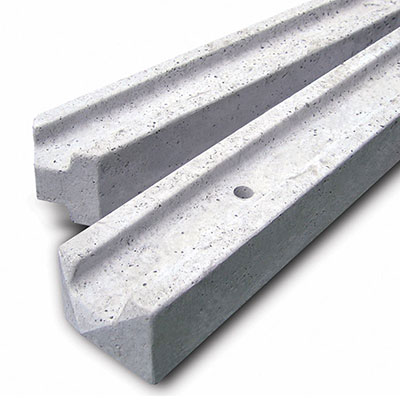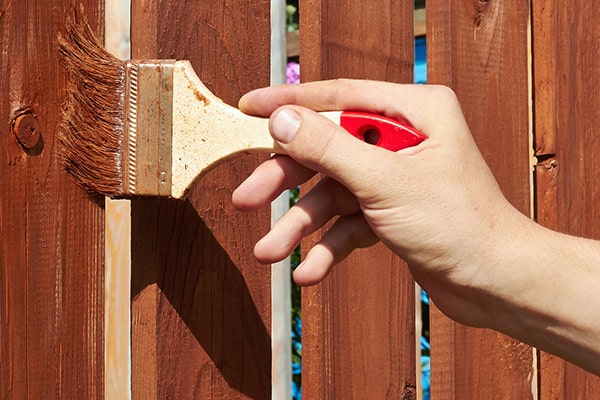
Garden fencing is a big investment and one that should last you for years. However, this isn’t something that will happen by itself. To enjoy effective and attractive garden fences over the long term, you’ll need to invest a little bit of extra thought, time, and money into fence preservation.
Here, we explain wood treatment for different types of garden fence panels, the importance of preserving wooden fences, why certain fencing accessories can prolong a fence’s lifespan, and what simple decisions you can make to prevent your new garden boundary from being damaged by the weather and water ingress.
Editor’s Note [14.12.23]:
Our article about garden fence preservation and treating wooden fence panels for longevity was originally published in September 2021. Today, we have expanded the text in many sections and added information about treating wooden fences, and colour options for timber treatment solutions.
Treating Fence Panels
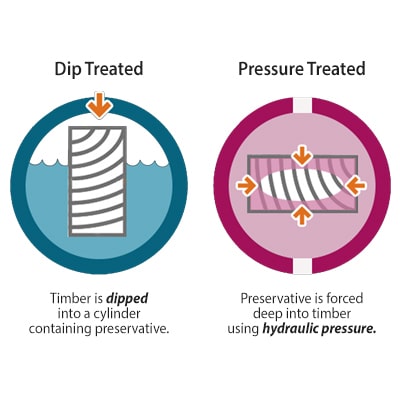

All good-quality fence should have been protected against wood rot and fungal decayed wood before you buy it. Treating fence panels will involve either a dip-treatment or a pressure-treatment process and will apply to both rough sawn and smooth planed timber. These are usually available with clear (bare wood) and coloured formulations. You should be able to buy coloured wood fence preservative treatment, to match your chosen décor. Some timber treatment products are also available with UV protection.
As the name suggests, dip treatment involves dipping the fence panels and posts into a wood preservative, removing them, and then allowing time for the liquid to absorb into the wood. This process protects exterior wood but does not soak deeply into the inner fibres like pressure treating does.
Pressure-treated fence panels and posts are placed inside a chamber and forcibly have a wood preservatives treatment, which penetrates deep inside their fibres under hydraulic pressure. This provides them with even better protection.
The same benefits apply to other garden wood, garden sheds, and log cabins, etc., the pressure treating process would benefit this wood in the same way.
As dip-treated fencing requires greater maintenance, let’s examine it first.
Maintaining Dip-Treated Fencing
Dip-treated panels and fence posts require retreating on an annual basis. This means you’ll need to coat them in a high-quality wood preservative. Treating fence panels with regular maintenance is key to fence preservation when they are dip treated. This ensures your garden fence withstands the test of time.
Follow these 6 simple steps for using dip treated wood as a wood treatment:
- Clear away - any debris, such as cobwebs, algae, and moss with a stiff, dry brush.
- Calculate the area - to be treated by multiplying the size of the panel by the number of them in your fence run. Repeat this process for the posts. Add the two figures together.
- Calculating quantity of fence preservative needed - on the tub or tin of preservatives, the manufacturer shows the coverage area. Divide the total area to be treated (panels + posts) by this figure to see how many tubs or tins of preservative you require. Buy an extra one, just in case.
- Buy a top-quality brand - always purchase a high-quality, brand-name garden wood preservative when treating wooden fences. Do not deviate from the application instructions on the tub or tin.
5. Use a variety of brush sizes - larger ones for the main body of the wood, and smaller ones to get in between the gaps.
6. Pick a dry day to carry out the work - Our range of dip-treated fence panels are guaranteed against wood rot and fungal decay for 10 years, as long as you follow this advice.
Maintaining Pressure-Treated Fencing
This is not a sales pitch; it’s a simple fact: if you purchase pressure treated fence panels and posts from most fencing suppliers, you will have to retreat them as you would dip-treated panels and posts.
Buy Sheds Direct’s fencing is different. Our pressure treated panels protect from wood discolouring fungi (e.g., blue stain), insect attack, and eradicates woodworm.
Almost all of our pressure-treated fence panels and posts come with a 15-year anti-rot guarantee, with no retreatment required, saving you time and money by prolonging the life of your fence run.
What About Paint for Preserving Wooden Fences?


Paint protects fence timbers against rot and fungal decay too, so offers you an alternative fence preservation solution to wood preservatives.
It is easy to apply with a brush or roller and will sit on the wood to provide extremely effective protection against whatever nature throws at it. What’s more, litre for litre, treating wooden fences with fence paint covers a greater surface area than stain. However, the downside is that it can sometimes crack.
As there are so many colours available, using fence paint also allows you to create a unique style of garden boundary whilst also preserving wooden fences.
One important thing to remember, though: if you decide to paint new pressure-treated fencing (which, of course, would only be done for aesthetic purposes if you buy from us), allow six months for the excess treatment to disappear before starting the job.
Spraying Fence Treatment and Paint
Some people favour spraying the treatment or paint onto the panels and posts, rather than applying it with a brush. If using this method, wood preservatives and paint can clog regular garden sprayers, so only use one made for the purpose. Additionally, keep a stash of cardboard on hand to shield the surrounding area.
Why Fence Accessories Provide Fence Preservation
Some fence accessories can protect your garden fence run. Here’s how:
Gravel Boards
Gravel boards raise the height of the fence panels and protect garden fences from ground moisture. This prevents rot and fungal decay from attacking the bottom of the panels and prolongs the life of your fencing.
Gravel boards should always be made of concrete or pressure treated wood, otherwise, they will be vulnerable to rot and completely ineffective over the long run.
Fence Post Caps and Finials
Post caps are crucial for safeguarding the tops of wooden fence posts against weather conditions and elements that lead to rot and fungal decay. Therefore, it is important to select post caps crafted from pressure-treated wood.
Investing in post caps is a wise decision to prolong the lifespan of your fence, as robust fence posts are fundamental to the stability and durability of any fencing structure.
Finials have more ornate designs but serve the same purpose.
Learn more about the benefits of buying fence accessories here.
Annual Fence MOTs
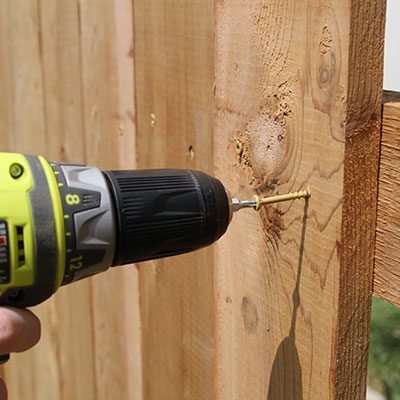

Don’t laugh, if an MOT is good enough for your car, then it’s good enough for preserving wooden fences too.
It’s best to do this job during the autumn to make sure your fence is in tip-top condition before the harsher winter weather sets in. To carry out your fence’s MOT, do the following:
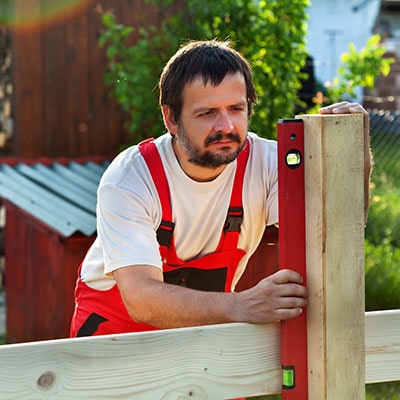

1. Clear the surrounding area so that you have unimpeded access to the fence. This includes removing and cutting back plants, trees and vegetation that come into contact with the wood.
2. Healthy fence posts are essential to a garden fence. Pay particular attention to the bottoms of them, as this is the area threatened by ground moisture, making it particularly liable to decay. If a fence post has minor rot or fungal decay, it can usually be repaired with a post spike; however, if the damage is severe, you should replace the post.
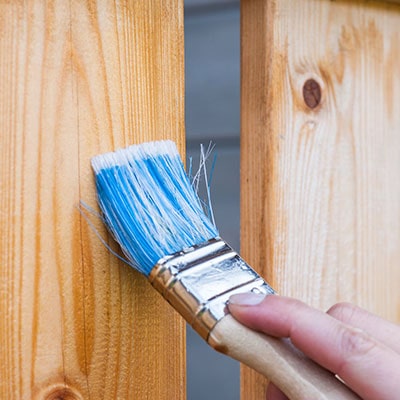

3. As your fence run will be tested over the winter months, make sure the fixings are free from rust and properly attached. If any are damaged or missing, replace them immediately.
4. Naturally, this is also a good time for dip-treated fence panels’ annual retreatment.
Choosing Longer-Lasting Styles of Fencing
If longevity is your main requirement for a fence run, you should narrow down your choice of panels and posts before buying. Considering fence preservation from the start can guide you in selecting more durable options.
Fence Panels
The style of your garden fence panels can have a big impact on its lifespan.
Particularly Robust Fence Panels
Closeboard panels and feather edge fencing are both excellent choices. The former is constructed from sturdy vertical boards within a heavy-duty framework, while the latter is built from tightly overlapping vertical boards supported by horizontal battens to the rear of the panel.
Each of these styles of fence panel oozes solidity and should last for years.
Fence Panels for Windy Areas
In areas prone to strong winds, slatted fence panels, trellis and picket fences are particularly smart selections. As they are all considered decorative, this might surprise you, but the gaps featured in their designs allow the wind to pass through the panels, rather than constantly pressing against them.
Discover more reasons to choose these decorative fence panels here.
Also, the taller the fence panel, the greater the potential for wind damage. Shorter fence panels make sound investments if you live in a particularly windy area.
Find out more about the importance of choosing the right size of fence panel here.
Fence Posts
Concrete fence posts are heavier and more robust than wooden ones. Use Post Crete to set them in position and they’ll last a lifetime.
When using wooden fence posts in windy areas, always insert the posts a little deeper into the ground than the standard two feet. Also, use screws rather than nails, as they are easier to tighten if they ever come loose.
Treating Wooden Fences with Buy Sheds Direct
Remember, prevention (through treating fence panels) is always better than the cure. If you want a longer-lasting fence run, then shop with Buy Sheds Direct for all things fencing. We only stock the highest-quality garden fence panels, posts, gravel boards and fence accessories amongst our superb range of garden fencing.
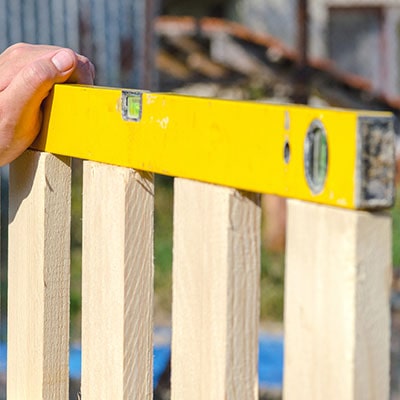

What’s more, our UK-based fence experts are always on hand to advise you on fencing-related matters, contact us in these ways:
- Phone - 0333 003 0514
- E-mails - through our contact form
- Text chat - use our live chat app for real-time text chat

